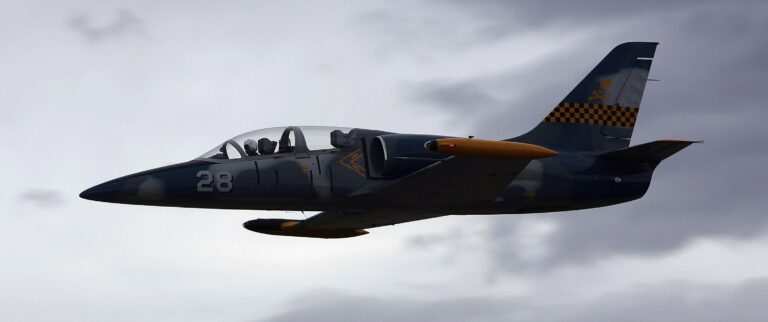
Ukrainian authorities are investigating the crash of two military jets that killed three pilots, including a decorated airman known for his lobbying of Kyiv’s allies to provide them with F-16 fighters.
The accident happened on Friday when the L-39 combat training planes collided in midair in the Zhytomyr region, west of Kyiv and hundreds of miles from the frontline.
“A catastrophe in the sky over the Zhytomyr region killed three pilots, including Andriy Pilschikov, call-sign ‘Juice’,” Ukrainian President Volodymyr Zelenskiy said on Platform X, formerly known as Twitter. “The investigation is ongoing, and the truth will be revealed. Ukraine will never forget all those who defended its free sky.”
The accident and death of one of Ukraine’s most experienced and talented pilots dealt an unexpected blow to Kyiv, which is rushing to send its airmen for training to switch from Soviet-era Mig-29 fighters to more advanced F-16s that have been pledged by NATO allies as soon as early next year.
Ukraine’s officials will investigate “the technical condition of the aircraft, compliance with the rules of preparation for flights,” and the black boxes of the jets, they said.
Captain Pilschikov, who hailed from Kharkiv, spoke fluent English and won fame as part of the “Ghost of Kyiv” unit that engaged Russian jets in dogfights above Ukraine at the start of the Moscow’s invasion in early 2022. He was one of the country’s most vocal proponents for the supply of the more capable NATO aircraft.
Also killed were Major Viacheslav Minka of Kyiv, and Major Serhii Prokazin, from the Poltava region, Ukraine’s defense authorities said. All three pilots were described as highly experienced, with hundreds of hours of battle mission flights under their belts.
While some politicians in Western countries balked at sending the aircraft, saying training may be too complicated or take too long for pilots to use the F-16s and more advanced weapons systems, the late fighter pilot contended that he and his colleagues had already begun studying and flying on make-shift simulators to prepare for in-flight training.
“I believe that in four to six months we can learn to fly it, it’s realistic,” Pilschikov, who got his call-sign from friends during a trip to the U.S. because he didn’t drink alcohol and instead always asked for juice, told CNN in June. “Our transition training will be pretty freakin’ easy.”
Denmark and the Netherlands pledged a week ago to send dozens of F-16s to Ukraine after receiving a required green light from the U.S. It was a major breakthrough after months of hesitation by NATO states to transfer more powerful weapons to Ukraine for its defense against Russia, including fighter jets and cruise missiles. Norway will also provide the jets, its prime minister said on Thursday.
The U.S., in particular, held back for months despite pressure from Ukraine and NATO allies, with President Joe Biden’s administration saying that more pressing military needs took priority and worrying that it might escalate the West’s standoff with Moscow.
Denmark said it had already begun training eight Ukrainian pilots and 65 maintenance personnel to operate F-16s after pledging to deliver the first six of 19 of the jets in January.
The U.S. will start instructing Ukrainian pilots and ground crews in October in Arizona, the Pentagon said Thursday in a statement. Training for more experienced pilots can be completed in about five months, it said. Before that process starts, pilots will receive language training in September.
Ukraine has dozens of pilots that are still operating its Soviet-made fleet of MiG-29s, Su-24s and Su-25s. But the loss of three airmen, including one of Kyiv’s most visible advocates for more powerful aircraft, has come at a bad time.
“You can’t even imagine how much he wanted to fly an F-16,” Ukrainian Air Force spokesman Yuriy Ihnat said on Facebook, referring to Pilschikov. “He was not just a pilot; he was a young officer with mega knowledge and mega talent.”
___
© 2023 Bloomberg L.P
Distributed by Tribune Content Agency, LLC.
0 comments :
Post a Comment